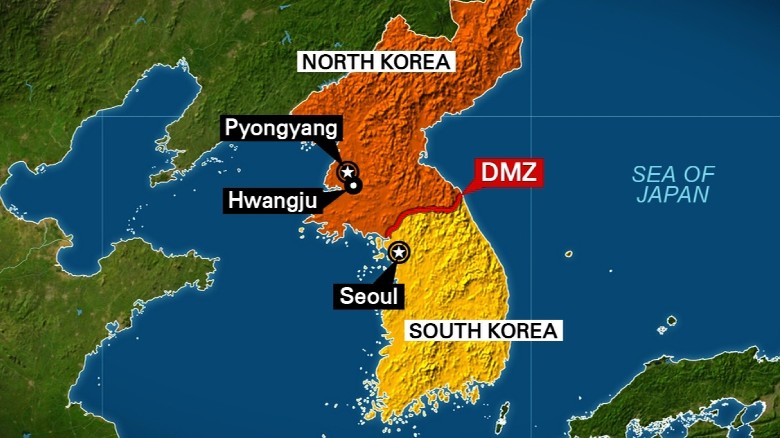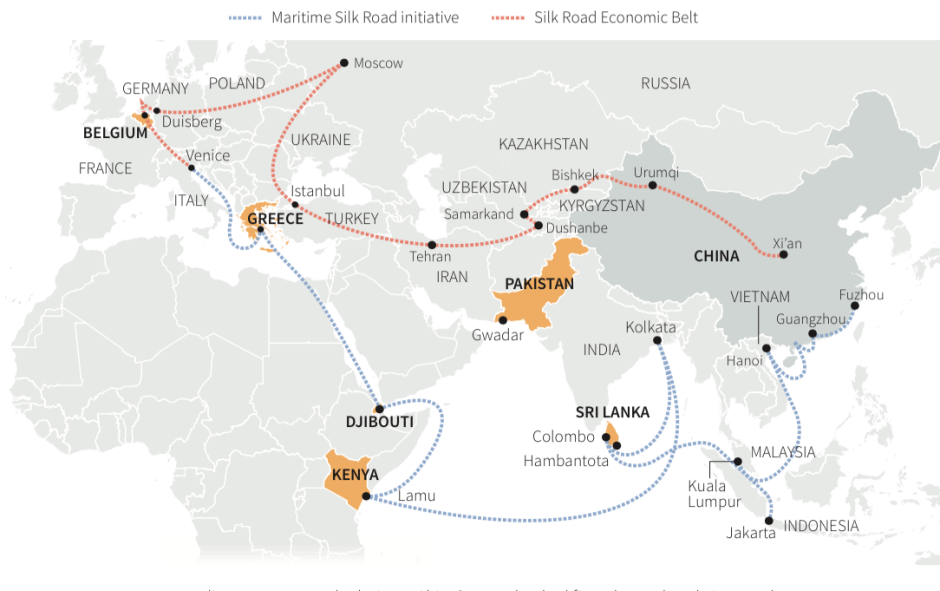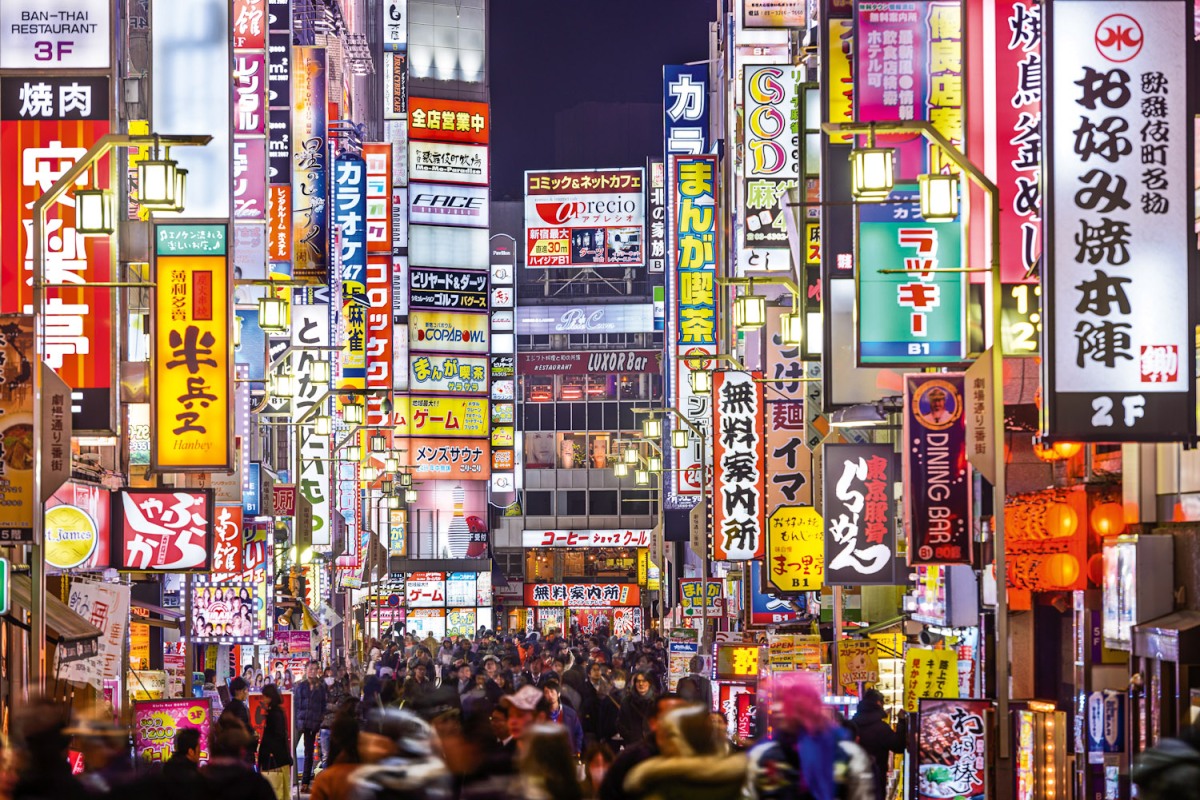WHAT would the world look like were President Trump to press the nuclear button? Previous presidents have chosen to ignore the clamourings from the tinpot dictators of North Korea. Trump, however, has discarded the calm, nuanced diplomacy of his predecessors. This is Donald Trump: the president whose threats of “fire and fury like this world has never seen before” with a regime notorious for its nuclear program were only the second most talked about thing in the US that week. If the regime is to fall, it may as well do so explosively – nuclear war could conceivably happen, as harrowing a prospect as it is. War might not be imminent, nor inevitable, but alternatives are thinning. So again, how would the worst case scenario leave the world?
Destruction
The answer, of course, depends. Primarily, on how long the North Korean regime has to react and inflict damage on the outside world. The closest and most affected target would be South Korea. In Prisoners of Geography, Tim Marshall posits that the hills to the north of the Demilitarised Zone (DMZ) – the border between North and South – are heavily fortified with artillery. Unfortunately for the South, its capital Seoul lies only 35 miles south of the DMZ. The artillery are all thought capable of hitting the Greater Seoul Region, the capital and its surrounding area, in which half of the country’s 50 million citizens reside. Even if it took the US and the South only a day to eradicate the artillery entrenched in the hills, Seoul would be devastated and with it, significant portions of the country’s manufacturing and finance industries.
Experts believe Kim Jong Un possesses intercontinental ballistic missiles (known as ICBMs) that are capable of hitting the US’ major cities – that includes New York, Chicago and Washington. Until very recently, this threat was isolated to targets on the West Coast such as Alaska or Los Angeles. US military bases in Japan and South Korea would also be targeted, with potentially further action against civilian centres in Japan. Even worse, the US military now believes North Korea has the capability to miniaturise nuclear weapons to attach to their ICBMs. The later a war comes, the more reliable their technology and the greater the potential damage the regime could inflict on the US.
If no city is out of the crosshairs, how many cities could be hit, and what would the damage be? According to a leaked US intelligence report, the North has potentially 30 to 60 nukes but 12 to 30 according to civilian estimates. Such a large range of potential nukes, without factoring into account the efficacy of the US’ anti-missile systems or the ICBMs’ accuracy makes it impossible to estimate damages. Needless to say, this would permanently scar and irrevocably alter the nation’s psyche.
The Kims have always been paranoid of a foreign invasion to remove them from power and subsequently developed a nuclear weapons programme as a deterrent. If they believe they are to be removed, their fate is sealed anyway and the nukes are there to be used. On the other hand, he US government could expect both domestic and international vilification for using the nukes on or near population centres, especially as standard missiles are equally capable. A larger scale incursion, often called the ‘decapitation’ option, would seek to neutralise the military and its weapons (including nuclear warheads), remove Kim and possibly feature invasion. Alternatively, a surgical strike to remove Kim’s military capabilities could well be sufficient for Kim to fire any ICBMs remaining and begin shelling Seoul, triggering war and again lead to Kim’s removal.
Nevertheless, removing Kim from power regardless of the severity of strikes would be incredibly destabilising and with armed force as large as 1.2 million, the military death toll for the North could easily reach the hundreds of thousands. The fate of North Korea’s remaining military is hazy. The extent of the indoctrinated love for their glorious leader is uncertain and following the fall of the regime, a fraction of the armed forces will in all likelihood stay faithful and resist foreign intruders. Fanatical terrorism against the US or South Korea by the regime’s die-hard loyalists would hardly be surprising.
Reunification?
After the immediate consequences, regime change becomes the next big question. In this nuclear war scenario an invasion by the US and the South would follow the bombs to ensure the discontinuation of the Kim regime. According to the researchers, between 1950 and 2012 only 20% of regime changes saw a democracy installed. But there is reason to believe that the North could see democracy: the newly elected President Moon Jae-in backs reunification in co-operation with the North’s elite class, and what remains of the elite would be vulnerable without military capabilities. South Korea can present reunification, including its perks of saddling with a rich country and longer term peace, as a get-out for these elites.
How the people of North Korea would react to regime change is unclear. The US and South Korea are working to undermine the regime’s control over access to information and the outside world. They aim to show citizens that alternative systems of government exist, that there is life outside of poverty; for reference, the South’s economy is 80 times larger than its northern counterpart. The US funds programs that supply foreign TV shows on USB sticks or supporting defector-run foreign radio, both accessible via goods that North Koreans can increasingly find on black markets. Whilst we cannot truly ascertain how fruitful this will be, we know the people desire more and that with time, they will become dissatisfied with their system and their leaders.
North Korea is a centrally planned economy and although private enterprise has quietly expanded in the past decade and can supplement material needs, rationing is the primary distribution mechanism for many essentials. There is no way that this could continue if the North wanted reunification. This places Korea in a unique position, with two distinct challenges: firstly, the North must transition to a capitalist market economy fitting with the South, and secondly, the two countries must merge. Planners should take heed and learn the lessons of other economies that have made the transition from Communism to market capitalism: China’s gradualist approach worked spectacularly, Poland’s shock therapy soon brought it the highest growth rates in Europe, but Russia collapsed after attempting sudden reform without external help.
Jeffrey Sachs argues that immediate trade liberalisation (opening up the economy to international markets) can alleviate shortages of goods, ‘import’ relative prices to correct price controls. Conversely, liberalisation does take its toll and intensifies pressure on firms, shutting uncompetitive businesses down and raising unemployment. A North Korean state with its current structure could not provide support for the newly unemployed, especially given the likely shortages following war. This creates a rationale for the international community to support the transition with aid, be it grants or concessional loans to the North.
The North’s central planning is not the only economic obstacle to seamless reunification. Kim’s regime holds an estimated 200,000 political prisoners in camps not dissimilar to concentration camps. They need freedom. Right now, these people are being starved, tortured and mutilated – information on their atrocious treatment can be found here. All need immediate medical attention and many will require life-long support for the accompanying physical and psychological afflictions. Further integrative steps need to be taken: prisoners will need housing, educating and incorporating back into communities and the economy. It would not be hard to see released prisoners and their descendents being economically disadvantaged: with few – if any – assets or skills suitable for a modern economy, unassisted assimilation will be an uphill struggle.
One conservative estimate costs reunification at $1 trillion, the equivalent of three quarters of the South’s GDP. On the other hand, some positives for the South can come out of reunification. Financially, the South would inherit a stockpile of precious minerals valued between $6 and $10 trillion. Not only this, but the South’s population is ageing and declining, whereas the North’s is young with a higher fertility rate, which would allow Korea to postpone demographic ills (see my post on Japan for a similar story). In our context, however, the South’s appetite for reunification will rapidly diminish the harder they get hit. The South could be pushed towards reunification if it could plausibly stem the inevitable stream of refugees headed south.
Nuclear war would create millions of refugees in the North, the South and wherever Kim’s nukes may land. Although the US may not use nukes against the North, plenty will take the opportunity to migrate away and seek a better life before a new regime takes shape. Many would disperse around the globe, but for those in North Korea, far more would head north into China – the North’s longstanding ally. China strives for stability in the region: Beijing is concerned by the prospect of an American ally on its border and uses the North as a buffer, whilst an influx of refugees would bolster ties between a reunified Korea and China which could be used as leverage against China. Beijing would therefore be reluctant to accept refugees and could attempt to stabilise and contain the region instead.
It’s safe to conclude that nuclear war is the nightmare scenario. It’s nigh on impossible to describe the horror and pain that could rain down on the world. Of course, this scenario is a hypothetical conditional on nuclear war actually occuring, which is unlikely. The Kim dynasty’s goal has been survival and the primary role of their nukes is as a deterrent – they know they would perish in a war against their enemies, but holding nukes makes the US think twice about aggression. Furthermore, if the US knows that if it missteps and spooks an incredibly sensitive Kim, Seoul will burn and they risk bringing their own cities into the firing line.


